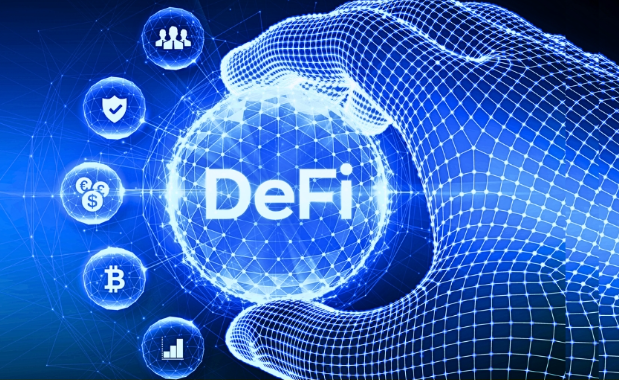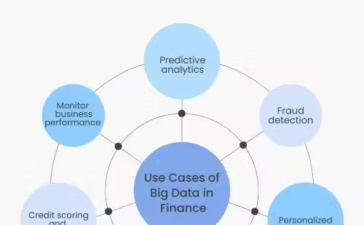Understanding Decentralized Finance (DeFi)
Introduction
Decentralized Finance (DeFi) is transforming the financial landscape by leveraging blockchain technology to create an open, permissionless, and highly transparent financial system. Unlike traditional financial systems that rely on centralized intermediaries such as banks and brokers, DeFi operates on a decentralized network, allowing for direct peer-to-peer financial transactions. This revolutionary approach is disrupting conventional financial services and promising new opportunities and challenges for users and developers alike.
What is Decentralized Finance (DeFi)?
Decentralized Finance, or DeFi, encompasses a broad range of financial applications and services built on blockchain technology. The core principle of DeFi is to eliminate the need for intermediaries—like banks, brokers, and payment processors—by utilizing smart contracts and decentralized networks. These technologies enable users to conduct financial transactions directly with one another, thus reducing costs, increasing efficiency, and promoting financial inclusion.
Key Components of DeFi
- Blockchain Technology: At the heart of DeFi is blockchain technology, a distributed ledger that records transactions across multiple nodes. Blockchain ensures that transactions are secure, immutable, and transparent.
- Cryptocurrencies: Cryptocurrencies, such as Bitcoin and Ethereum, are digital assets that facilitate transactions within the DeFi ecosystem. They serve as both a medium of exchange and a store of value.
- Smart Contracts: Smart contracts are self-executing contracts with the terms of the agreement directly written into code. They automatically enforce and execute the terms of a contract without requiring intermediaries.
- Decentralized Applications (dApps): DeFi applications, or dApps, are software applications that run on a decentralized network. These apps enable various financial activities such as lending, borrowing, trading, and investing.
How Decentralized Finance (DeFi) Works
DeFi operates on a decentralized network of computers, known as nodes, that collectively manage and validate transactions. Here’s a simplified overview of how DeFi functions:
- Blockchain Infrastructure: Transactions are recorded on a blockchain, which is a distributed and immutable ledger. Each transaction is grouped into a block and linked to previous blocks, forming a chain. This structure ensures the integrity and security of the data.
- Smart Contracts: Smart contracts are used to automate financial transactions and enforce contract terms. These contracts execute automatically when predefined conditions are met, eliminating the need for manual intervention.
- Decentralized Exchanges (DEXs): DEXs facilitate peer-to-peer trading of cryptocurrencies without the need for a central authority. Users retain control of their private keys and funds, reducing the risk of theft or fraud.
- Liquidity Pools: Liquidity pools are collections of funds locked in a smart contract that provide liquidity for trading and lending. Users contribute their assets to these pools in exchange for a share of the transaction fees or interest earned.
- Wallets: DeFi users interact with applications through digital wallets, which store their private keys and manage their cryptocurrencies. Wallets allow users to send, receive, and manage their assets securely.
Applications of DeFi
DeFi encompasses a wide range of financial services and applications, including:
- Lending and Borrowing: DeFi platforms enable users to lend their assets and earn interest or borrow assets by providing collateral. Examples include Compound and Aave.
- Decentralized Exchanges (DEXs): Platforms like Uniswap and SushiSwap allow users to trade cryptocurrencies directly with one another without relying on a central authority.
- Yield Farming: Yield farming involves providing liquidity to DeFi protocols in exchange for rewards or interest. Users can earn returns by participating in various liquidity pools.
- Stablecoins: Stablecoins are cryptocurrencies pegged to the value of a fiat currency, such as USD. They provide stability and reduce volatility within the DeFi ecosystem. Examples include DAI and USDC.
- Prediction Markets: DeFi prediction markets enable users to bet on the outcome of events, such as elections or sports games. These platforms leverage collective wisdom to forecast future events.
- Insurance: DeFi insurance platforms offer coverage for risks such as smart contract failures or loss of funds. Users can purchase insurance policies and claim payouts through decentralized mechanisms.
- NFTs: Non-Fungible Tokens (NFTs) represent unique digital assets and are used in various DeFi applications, including collectibles, gaming, and intellectual property.
Goals and Benefits of DeFi
The primary goals of DeFi include:
- Accessibility: DeFi platforms are accessible to anyone with an internet connection, regardless of geographic location. This inclusivity aims to democratize financial services and provide opportunities for the unbanked and underbanked populations.
- Low Fees: By eliminating intermediaries, DeFi reduces transaction fees and other costs associated with traditional financial services. Users can negotiate terms directly and avoid hidden charges.
- Transparency: Transactions and smart contracts on DeFi platforms are recorded on a public blockchain, providing transparency and accountability. Users can verify transaction details and audit smart contracts.
- Security: DeFi platforms use cryptographic techniques and smart contracts to secure transactions and protect user funds. The decentralized nature of the network reduces the risk of single points of failure.
- Autonomy: DeFi empowers users to retain control over their financial assets and transactions. The absence of centralized authorities means that users can manage their finances without relying on third parties.
Challenges and Risks of DeFi
While DeFi offers numerous benefits, it also presents several challenges and risks:
- Security Vulnerabilities: DeFi applications are susceptible to hacking, theft, and security breaches. Flaws in smart contract code or vulnerabilities in protocols can lead to significant financial losses.
- Regulatory Uncertainty: The regulatory landscape for DeFi is still evolving. Governments and regulatory bodies are working to address legal and compliance issues related to decentralized financial activities.
- Scalability: DeFi platforms often face scalability issues due to high transaction volumes and network congestion. Solutions such as layer-2 scaling and blockchain upgrades are being developed to address these challenges.
- Complexity: DeFi platforms can be complex and challenging for newcomers to navigate. Users must understand the underlying technologies and risks associated with each application.
- Lack of Consumer Protections: Unlike traditional financial institutions, DeFi platforms may lack consumer protections and recourse mechanisms. Users are responsible for their own security and due diligence.
Examples of DeFi Platforms
Several prominent DeFi platforms are making waves in the industry:
- Aave: Aave is a decentralized lending and borrowing protocol that allows users to earn interest on their deposits or borrow assets using collateral. It offers various features, including flash loans and variable interest rates.
- Uniswap: Uniswap is a decentralized exchange that facilitates automated trading of cryptocurrencies through liquidity pools. It uses an automated market maker (AMM) model to enable users to trade directly with one another.
- Compound: Compound is a decentralized lending platform that enables users to lend and borrow cryptocurrencies. It operates using an algorithmic interest rate model and distributes governance tokens to users.
- MakerDAO: MakerDAO is a decentralized platform that issues the DAI stablecoin, which is pegged to the value of USD. Users can collateralize their assets to generate DAI and participate in the governance of the platform.
How to Get Involved in DeFi
Getting started with DeFi involves several steps:
- Research: Research the various DeFi platforms and services available. Identify the ones that align with your financial goals and interests.
- Choose a Wallet: Select a digital wallet that supports DeFi applications. Popular options include MetaMask, Trust Wallet, and Coinbase Wallet.
- Acquire Cryptocurrency: Purchase cryptocurrency from an exchange and transfer it to your wallet. Common cryptocurrencies used in DeFi include Ethereum (ETH) and stablecoins.
- Explore DeFi Apps: Access DeFi platforms and applications through your wallet. You can participate in lending, borrowing, trading, or other financial activities.
- Stay Informed: Stay updated on developments in the DeFi space and monitor the performance of your investments. Be aware of potential risks and security measures.
The Future of DeFi
The future of DeFi is promising, with ongoing innovations and advancements in blockchain technology. As the ecosystem matures, we can expect:
- Increased Adoption: DeFi is likely to see broader adoption as more users and institutions recognize its benefits. Integration with traditional financial systems may also occur.
- Regulatory Clarity: Governments and regulators are working to establish clearer guidelines for DeFi. Regulatory clarity will help address legal uncertainties and enhance the credibility of the sector.
- Improved Security: Advances in security protocols and smart contract auditing will enhance the safety of DeFi platforms. Enhanced security measures will reduce the risk of hacks and vulnerabilities.
- Interoperability: Increased interoperability between different DeFi platforms and blockchains will facilitate seamless interactions and enhance the overall user experience.
- Innovation: The DeFi space will continue to evolve with new applications, services, and technologies. Innovations such as layer-2 scaling solutions and cross-chain compatibility will drive further growth.
Conclusion
Decentralized Finance (DeFi) represents a transformative shift in the financial industry, offering a decentralized and open alternative to traditional financial systems. By leveraging blockchain technology, cryptocurrencies, and smart contracts, DeFi enables direct peer-to-peer transactions and reduces reliance on intermediaries. While DeFi presents significant opportunities, it also comes with challenges and risks that users must navigate.
As the DeFi ecosystem continues to develop, it holds the potential to reshape the future of finance, providing greater accessibility, transparency, and autonomy for users worldwide. However, participants should approach DeFi with caution, conduct thorough research,





